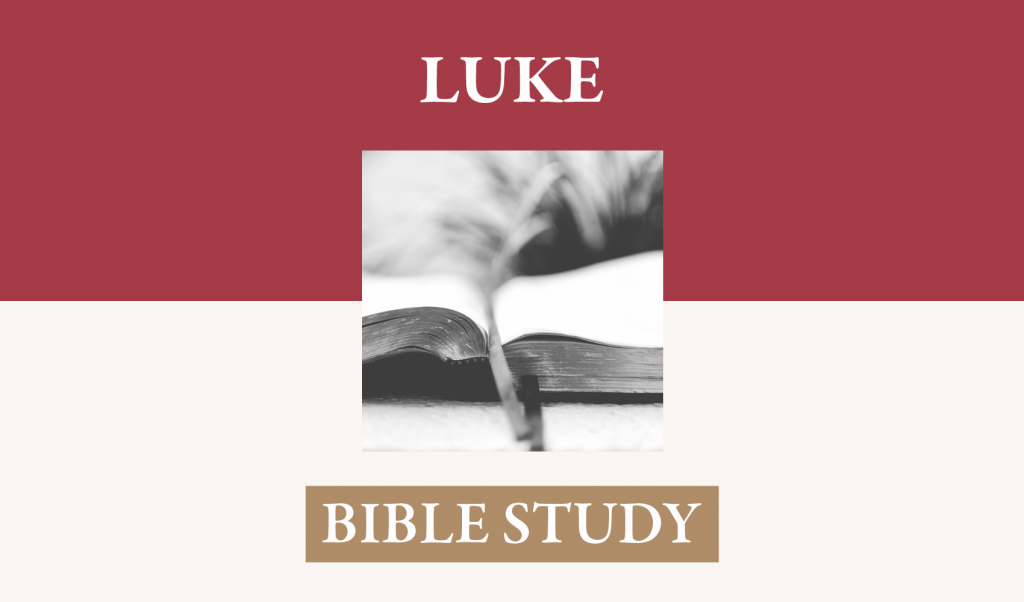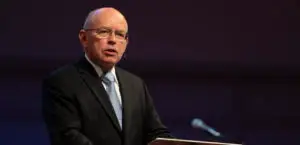An outline for the sake of context is provided for the entire section. The focus passages are given larger print and a bit more extensive comment. TJN
Luke 4:31-44: Jesus, leaving
4:31, 32 – Authoritative teaching – It is interesting that the passage Jesus read in the synagogue in
4:33-37: Authority over the oppressive force of demons.
1. 33, 34 – The demon present in one of the attendees at the synagogue recognized that Jesus’ teaching could only be from one that dwelt in the presence of God and was an originator of the divine purpose for creation and redemption. This demon recognized both the element of authority and the detailed purity of original truth. Where had he heard such words and where had he experienced the laying forth of elemental purpose before? Why, he had heard it at the very throne of God as angels were beginning to hear their assignments of service to those that would be the heirs of salvation in the covenant dispositions and revelations given by the triune God to the created inhabitants of heaven! [Hebrews 1:13, 14] This demon had been led by Satan, Beelzebub, to resist that plan in the pre-mundane heavenly world and had been cast out as a result. Without his intent, the demon had become party to the appearance of the Son of God and now recognized the nearness of his final consignment to Hell when all his enemies would be put under the feet of this very one. Filled with shock, terror, and demonic anger, he exclaims in the assembly first his recognition of this one, “I know who you are” and includes in his shocked reaction three truths, all of which he hates: one, the mystery of the incarnation [“Jesus of Nazareth” Note the power of the words of Charles Wesley “Veiled in flesh the Godhead see, Hail th’incarnate ceity”], two, the nearness of his impending destruction “Have you come to destroy us?], and three, the uncreated originality of the holiness of this person [“the Holy one of God”]. [see also the words of the demon in verse 41]
2. 35 – Jesus immediately shows that the demon, even prior to his final consignment to the abode of eternal and unspeakable torment, must be subject to his command and authority. Upon leaving the man, the demon’s exit showed that not only were the verbal capacities, and probably the rational also, of the man subject to his operations, but the strength of his body had been absorbed into the demon’s earthly movements so that on his departure his own strength could not sustain the possessed one and he fell to the ground, but unharmed.
3. 36, 37 – This caused an immediate response from the rest of the crowd. They recognized both authority and power in Jesus confrontation with the demonic. This should have been sufficient evidence for them to accept what he said and to receive his message about the nature of the
38-41 – Authority over all kinds of physical ailments
1. Healing the mother-in-law of Simon Peter [Peter was married, his wife became a believer and accompanied him on his preaching journeys as an apostle 1 Corinthians 9:5] Simon [Peter] was evidently in the synagogue when these things occurred. Either he invited Jesus home to eat with him, or a la Zacchaeus, Jesus invited himself to prepare the way for Peter’s call as a disciple. Peter and his family appealed to Jesus to heal the mother-in-law. On this occasion, there was no touching, no application of a balm of any sort, but a mere rebuke of the fever. This is consistent with the theme of immediate authority that Luke is weaving into the narrative at this point.
2. On the other hand, the healings that follow in the evening are accomplished by Jesus laying his hands on people. We see further alarm in the demon community that the Son of God has made his appearance and is about the job of fulfilling the decree of redemption from death and sin in order to bring about the final consummation of all things. They knew now the end was near and they knew that this man, Jesus of Nazareth, was at the same time the eternal Son of God.
Prayer and Preaching superior to all of these 42-44
1. When Jesus went to a desolate place (42), it was for the sake of prayer [cf. 5:16]. In his humanity, Jesus consistently needed the strength that communion with God the Father provided him. He was not an activist primarily, but was intent on keeping a clear vision of his redemptive purpose and how utterly dependent the accomplishment of that was on his consistent experience of the Father’s glory and love that immediately bolstered his obedience to the Father’s pleasure. In prayer he received ever-refreshing and ever-clearer perception of the difficulties that still awaited him in this continued obedience [cf. Hebrews 5:7-9] but also has commensurate assurances of the joy that would arise out of the infinitely radical obedience [cf. Hebrews 12:2].
2. When the crowds sought him out for more instruction and perhaps more healing, Jesus left them for the purpose of an itinerant ministry. He was preaching the gospel of the
Luke 5:1-11 – Not Many Wise, Not Many Noble
He Teaches the Word of God to the plain and simple, not the elite
He demonstrates sovereignty over Fish 4-7
The combination of teaching and power brought Peter to realize the danger of sinfulness in the presence of holiness 8
Jesus speaks in mercy and indicates his sovereign right over men as well as fish 10
His first disciples leave their livelihood to follow him 11
Reaching the Unclean 12-16
A Leper approaches Jesus with a plea and a submissive spirit. He was convinced of the power of Jesus and also knew that Jesus’ purpose was always righteous. Should refuse to heal him, he would be righteous in such refusal. The leper submitted himself to the divine pleasure but with full awareness that Jesus could heal him if his purpose was one of mercy and not of judgment.
Jesus indicates his willingness to heal as well as his sovereignty over both disease and circumstance cf. 4:27 Is Jesus claiming identity with the healer of Naaman? At this stage in the ministry of Jesus, this recognition of power, sovereignty, and mercy couched within a spirit of supplication was an indication that one’s heart had truly engaged the spirit of repentance. Jesus came to seek his own, he knew his sheep, they knew him, and in that framework the connections of repentance and mercy would never fail. The surprising nature of mercy must not fade from view but must be brought into clearer focus. We live in an age that quickly concludes that a theology that sets forth sovereignty in the display of mercy must be rejected as cruel and unworthy of God. People seem surprised that God can discriminate in the granting of mercy. Our age is offended at such an idea and thus argues in reality that grace is no more grace, but amounts to an obligation that God owes the sinner. We must be humbled when God shows mercy to sinners and learn to rejoice that any sinner may be the recipient of such an undeserved favor of such an infinitely glorious nature.
Jesus follows the Levitical code [Leviticus 13 and 14] What is the relation between “tell no one” and “Show yourself to the priest etc. as a testimony to them?” Until Jesus death and resurrection, the ceremonial law remained as a type to be fulfilled. Jesus would not break that continuity until the time ordained by the Father and in accordance with the necessary relation of prophecy and fulfillment, type and anti-type.
15 – News of these miraculous events spread and brought more people zealous for teaching and healing. This constant stream of supplicants for healing might have contributed to Jesus instruction to the man to “tell no one.” Jesus was not looking for greater busy-ness but needed more and more time in uninterrupted conversation with the Father.
16 – Jesus maintained his awareness and practice of dependence on the Father
The Priority of forgiveness 17-26
Notice the great interest engendered among the Pharisees and teachers of the law “every village”
Notice the zeal and confidence of the friends of the lame man 18, 19 “In our applications to Christ, we must be very pressing and urgent: That is an evidence of faith” MH
Jesus immediately gave him the gift that was the ultimate purpose of his coming, forgiveness
The issue of the divine prerogative of such an act immediately come to the front
Jesus heals the man to show that even as Son of Man he retains divine authority
They glorified God: But was it more for the miracle of healing or the wonder of forgiving grace
The Forgiver Looks for those who need it, and know it: Grace more wonderful than miracles of nature: 27-32
Jesus calls Matthew from his booth where he received payments of tax: This is not a miracle of nature but a wonder of grace
Levi [Matthew] followed and invited all his tax collector acquaintances to meet him; compare this to the woman at the well telling the townspeople “Come see a man who told me all that I ever did”
It is a wonder of grace that Jesus puts himself in the place where he can do sinners good: healing is only a faint reflection of forgiveness
33-39 – Christ prepares his people for the reception of the New Covenant, both its joys and trials
Jesus did not require fastings of his followers during the days of his popularity; austerity would come soon enough, 33, 34 The austerities required by John of his disciples and the Pharisees of their disciples did not have the sacrifice of the gospel as its driving motivation
Their time of fasting and austerity would come 35; 2 Corinthians 11:23-33; Hebrews 12:4-11; James 5:7-11; 1 Peter 1:3-9
An attempt to require suffering without establishing the objective foundation will only ruin both the new and the old. Apart from gospel motivation the old seems preferable. 36-39 – But with the fullness of the gospel present no austerity for its sake seems too great; Romans 8:17ff; 2 Corinthians 4:7-10, 16-18; Phil 1:29; 3:8-11; Colossian 1:24-29
Jesus and the Sabbath – 6: 1-11 [Jesus is the giver of the Law]
Relieving hunger 1-5
The disciples violated an aspect of the Pharisee’s code to meet human need
Jesus example shows that ceremonial law was suspended in part in light of human need
His correction of their unwarranted restriction showed his authority in understanding the purpose of the Sabbath; This was not an abrogation of the Sabbath but placing it in its proper moral framework of love to God and love to neighbor – 5
Healing infirmity 6-11
The conflict perhaps was arranged 7
Jesus obliges by having the man stand, asking a question specifically about the Sabbath 8, 9
He heals him, again showing that his authority is purely related to an immediate understanding of the purpose of the Sabbath, and not adulterated by the Pharisees extra-legal additions.
Application
No one comes to Jesus in a gospel way that does not see himself as a great sinner
Anyone who comes other than as a great sinner in need of mercy does not come to Jesus
Jesus demonstrates that both his humanity and his deity are essential for his redemptive work
It is clear that the demonic realm is aware that Jesus’ completion of his redemptive work finalizes their condemnation and destroys their chief claim on the death of sinners.
Jesus throughout his ministry shows that the greatest demonstration of power and wisdom is that which produces forgiveness; This the background of the “greater things” that the disciples would do [John 14:12]
Jesus’s great mercy prepares his sheep for the trials that they must endure by showing them the infinite gain of knowing his grace at the cost of worldly approval
















